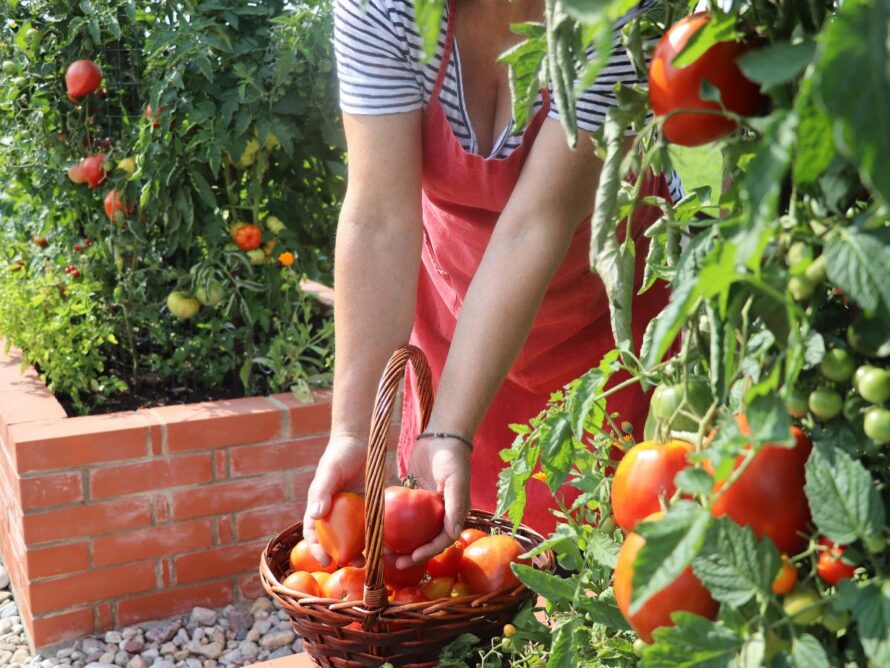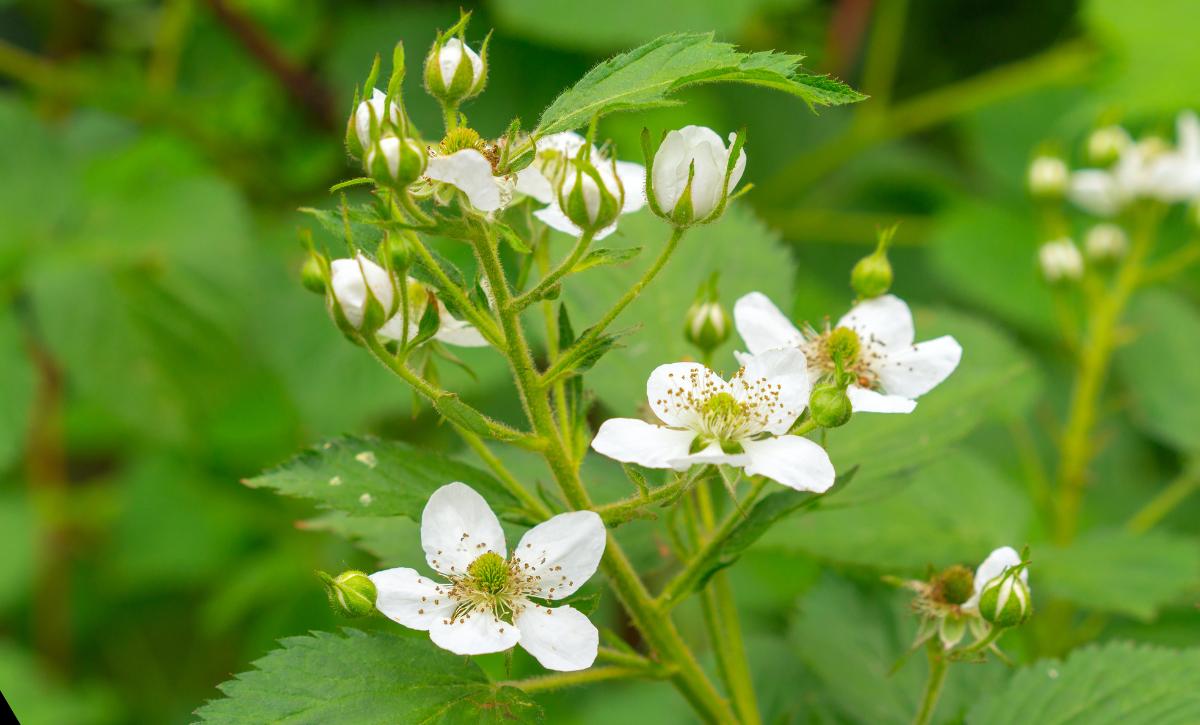Having a vegetable garden could do wonders for your kitchen and exterior space. On the one hand, you get fresh garden produce for your recipes, while on the other hand, the garden can contribute to your space’s aesthetics. You can try different layouts, from vertical gardens to raised garden beds or even square-foot gardens.

Whether you are new to gardening or a seasoned gardener, there are a variety of crops you can try. Some common choices include tomatoes, peas, lettuce, and radishes. Here are a few vegetable garden designs that can work with different spaces.
Take a look!
The Basics of Vegetable Garden Design

As with most garden designs, location is the first critical factor to consider before designing a vegetable garden. Once you’ve figured out the location, you can decide on the design choice and the type and size of the garden that is suitable for the space. Here are some key factors to consider.
Soil Type: While vegetables need plenty of water to be healthy and robust, they don’t thrive in soggy soil. Most vegetables thrive in well-draining, loamy soil. So, before you select the location, you need to inspect the type of soil. Is it well-aerated, or is it compact? If the soil is compact, you may need to amend it before growing your veggies.
Location: Vegetables thrive in a space with total sun exposure, crucial for healthy vegetables and fruits. The ideal location will be where the plants can receive 6-8 hours of full sun exposure daily. The proximity of a water source and good drainage will also play a crucial factor. The nearer the plants are to a water source, the easier it’ll be to irrigate them.
Size: Of course, the available space will determine the size and design of your vegetable garden. It can also help you choose the type and amount of plants to grow. Once you’ve decided on a suitable size, you can sketch the garden’s layout on graph paper. Ensure you plot the garden to scale and that there’s enough space for all the crops you want to grow.
Type of Garden: The type of garden can be determined by the soil type and climate of the area. If you have a rocky yard or compact soil that needs to be thoroughly amended before growing vegetables, you can opt for raised garden beds or containers. Raised garden beds can be structured to fit the size of your garden space, and they also make the gardening and maintenance process easier. For small spaces such as patios, balconies, or small yards, you can go for container gardens.
Vegetable Garden Layouts To Try
Whether you have a big or small yard, these layout options will be perfect for your vegetable garden.
Vertical Gardens

Vertical gardens take up less space and are usually cheaper to develop than other types of gardens. Since they take up relatively less space, they are perfect for small spaces. Vertically growing the plants makes it easy to access and replant them.
The structure of the garden can be made from fabric or wood. Alternatively, you can opt for a commercial plant that’s usually made of plastic. Good soil and adequate lighting are critical when growing a vertical garden. The only major downside is that you have to water it frequently; two times a day should suffice.
The best vegetables to grow in a vertical garden are compact varieties that don’t take up much space, like baby kale, salad greens, dwarf peas, bush beans, and herbs. These plants mature quickly and have a shallow root system, so they won’t wither in your vertical garden.
Homestead Gardens
If you have ample space or enjoy preserving food by freezing canning or mass-producing garden produce, then a homestead garden or a large in-ground garden will be ideal for you. Homesteads are usually larger than traditional vegetable gardens and may cover up to an acre of land.
Like row gardens, you should aim to maximize produce in such gardens. Ensure you have healthy soil and select highly productive plants and their cultivars. It’s also essential to control weeds and ensure your plants have full sun exposure and a consistent supplier of moisture and other crucial elements such as water.
If you’re planning on growing a homestead garden, invest in tools and systems that’ll make work easier and increase the garden’s productivity. For example, you can invest in a gas-powered tiller that can help break up the soil and help with weeding once the plants have grown.
For watering, you can use a drip irrigation system that keeps the roots moist and prevents water from reaching the leaves and fruit, which could cause diseases and rot.
Raised Garden Beds

Raised gardens have recently seen a lot of applications in outdoor spaces; using them for a vegetable garden is the latest one. They come in different shapes and sizes, and you can use various materials to make them, from bricks, wood, metal, plastic, or even repurposed containers.
If you live in a rocky area with poor or impoverished draining soil, a raised garden is the ultimate solution for a healthy vegetable garden.
Raised garden beds are also perfect for areas with a short growing season. The soil in a raised garden bed warms quicker in spring, enabling you to grow vegetables such as lettuce, peas, or strawberries.
One critical advantage of raised garden beds is that they’re easy to maintain, so weeding is much easier. This makes such gardens ideal for people with limited mobility. Additionally, they’re much better suited for root vegetables since the soil isn’t compacted by walking on it.
Partial Shade Gardens
If you don’t have an ideal place where your plants can receive full sun, don’t fret. You can still grow a partial shade garden. This can either be a raised bed, ground planted, or even in a container.
Some leafy vegetables, such as leaf lettuce, kale, spinach, collards, and Swiss chard, can grow in areas that receive 3-4 hours of sunlight. Other plants that can thrive in such conditions include cabbages, radishes, beets, cauliflower, and broccoli.
Square Foot Gardens

A square-foot garden is a more advanced version of a raised garden bed. Here, the bed is divided into squares so you can plant individual crops in each garden. The easiest way to build a square-foot garden is to use 12 x 12’’ containers. You can also add walkways between the gardens so that accessing the garden is easy.
Even though you can grow any vegetable or plant in your square-foot garden, it’s better to go for varieties that don’t spread or grow exceptionally large, such as those that extend over the bed. For example, try fingerling potatoes over russets or cherry tomatoes over larger varieties such as beefsteak.
Another good vegetable variety to grow in your square-foot garden is lettuce and herbs, which can be frequently harvested and replanted during the growing season.
Four Square Gardens
Like foot-square gardens, four-square gardens follow the structure of raised garden beds. In this structure, they’re made of four raised garden beds with paths in between that facilitate the gardening process. The design comes from early English cottage gardens, divided into four sections by two intersecting paths, hence the term.
You can customize the beds to fit your space. They make the perfect garden for a variety of vegetables while providing easy access to the garden. You don’t need to raise the beds high off the ground—about 6 to 8 inches will do just fine.
One of the best things about four-square gardens is that they can act as a landscaping feature for your outdoor space. Some gardeners use a fruit tree as the centerpiece of each raised bed, while seasonal vegetables are grown in patterns around the tree, creating an aesthetically pleasing garden.
Gardening in Rows

A garden in rows is the perfect addition to a small backyard. You need to amend the soil on the ground so it’s loose when you pick it up and slip through your fingers.
The best time to amend the soil and add supplements and fertilizer for a row garden is during the fall season. However, this should be at least three weeks before you begin planting in springtime.
Choose productive plants that’ll maximize the space in the row garden, such as radishes, tomatoes, lettuce, turnips, snap beans, carrots, greens, and peppers.
Small In-Ground Gardens

In-ground spaces may sometimes feel absolute, but in a space as small as 10 x 10 feet, you can grow various vegetables for a small family. All you need is good, well-draining soil to ensure the plants are well-supplemented.
In-ground gardens have similar growing tips to row gardens. The type of plants you grow is entirely up to you, whether you like leafy greens or root vegetables. You can improve the yield by planting in the spring and fall. Here are a few plants you can grow during the summer season:
- Pepper plants
- Eggplants
- Bush bean plants
- Trellised or caged indeterminate tomato plants
- Cucumber plants
Choosing the Right Plants For Your Vegetable Garden
The design of your garden will be significantly determined by the vegetable seedlings you decide to plant or the seeds you start. First, you need to determine the type of vegetables you and your family enjoy, the climatic conditions, the growing season’s length, and the plant’s size upon maturity.
Some plants, like corn, take up a lot of space, and some tomato varieties produce large, sprawling plants that may spread aggressively. Growing plants such as beans and peas will require a little bit of finesse in terms of stalking to keep the plants off the ground and ensure they’re disease-free.
If you have space limitations, it’s a good idea to consider companion planting. Select vegetables that pair well together to ensure they have optimum growing conditions. This may also improve the plants’ flavor. Tomatoes pair well with basil, carrots, cucumbers, squash, and other herbs. Introduce a three-way companion partnership for optimal results.
Vegetable Garden Design Tips
Once you have made all the necessary preparations to start your vegetable garden, these tips will guarantee an ample harvest no matter the design that you go with.
- Please consult your local cooperative extension office on the best vegetables to grow in your area and their planting schedules, or seek the advice of experienced gardeners.
- Ensure your plants aren’t overcrowded. They may seem small as seedlings, but if you plant vegetables too close together as they age, they may be close to each other, which may increase the risk of spreading diseases and depleted nutrients, hence decreasing the yield.
- Good soil is crucial for a good harvest. Start the garden with loose soil that has been replenished with organic matter.
- Rotate your crops each year to reduce the risk of diseases spreading and nutrient depletion.
- Mulch the garden to preserve moisture and prevent weeds from growing.
- Selecting pest-resistant varieties and biological pest control methods, such as using ladybird insects, could help reduce the risk of pests and diseases.
Frequently Asked Questions
What vegetables shouldn’t be planted next to each other?
While companion planting may be beneficial, planting some vegetables next to each other may have adverse effects. Incompatible vegetables may attract pests and diseases, stunt growth, and negatively impact the taste and flavor of some vegetables.
Here are some vegetables you should never combine: corn or cabbages next to potatoes, eggplants or cucumbers with potatoes, and peppers next to cabbages.
Which side should I plant my garden rows, east to west or north to south?
To increase sunlight exposure, plant garden rows from north to south.
What is the most efficient vegetable garden design?
The square-foot garden is the most efficient vegetable garden design for small spaces. Depending on the space you have, you can scale the garden to size or make several gardens.








